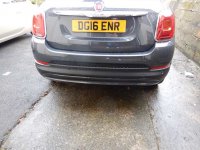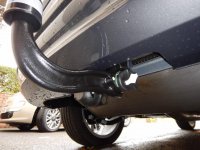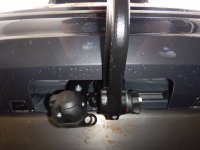Got a tow bar fitted today at Chester Towbars. When I returned to pick the car up they (and I) were surprised to find the original crash bar at the back of the car is made of plastic. Quite a shock.
Now, however, there is a solid bar of metal in its place and a fitting for a detachable tow hitch. Nice job all in all.
Now, however, there is a solid bar of metal in its place and a fitting for a detachable tow hitch. Nice job all in all.








